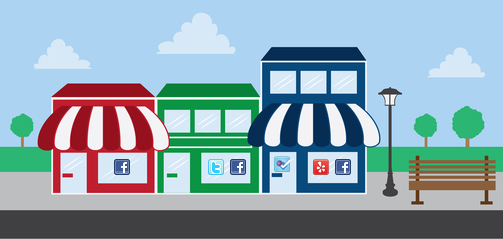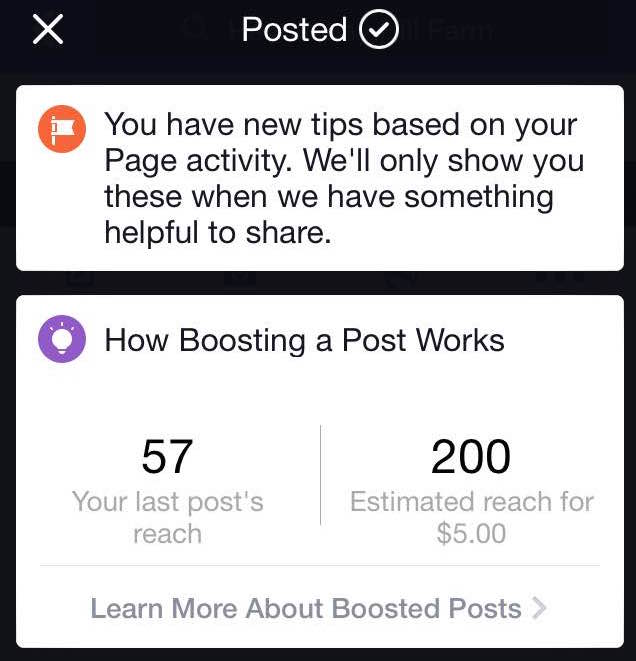Every day, more and more small businesses are embracing social media as a new and necessary part of both smart marketing and good branding. Of course, I’m glad to see this. But so often we see rather sad Facebook pages, inactive Twitter accounts, neglected social platforms. The road to weak marketing is paved with good intentions, as they say (they say that, right?).

Social media marketing can take time, money and strategic thinking – three things that many small businesses don’t really anticipate or properly allot for in their schedules or budgets. But getting off on the right foot can make a world of difference in the life of your social media networks. Starting off strong – with consistency and a smart strategy – will set you up for success, even when you’re too busy or your social media intern bails mid-week.
3 Steps For a Strong Start
Once you’ve thought hard and decided which social networks are best for your business (more on that here from social expert Kevin Popovic), get started with these 4 steps. You’ll build a sturdy basis for future reputation building and user engagement on whichever networks you choose.
1. Be Consistent and Thorough in the Essentials
When you’re setting up your social media pages, there’s a lot to add. Photos, copy, hours, location details, etc. It’s important that you set the standard by being very consistent across all networks. If, for example, people call your business Downtown Hardware, but the full name is really Downtown Hardware & Tools, make sure you use that full title for all your social pages and accounts. Or if you have a few different logos that you use, choose one that will work for Facebook, Twitter, and your other pages. Customers and users should be able to recognize you right away, and different names or logos will just confuse them.
Each social network gives you different ways to list your information, but try to use the same copy wherever possible. So your About section for Facebook should match your LinkedIn summary, and your Google+ About as well. Have an extra-short blurb for networks like Twitter and Instagram that don’t allow you much space. Try to use the same handle wherever you can, so users can easily tag you in their posts.

The last part of this critical setup is being sure to include ALL the information you’re allowed to enter – this means hours of operations, contact information, location details, etc. Customers so often now turn to a Facebook or Google+ page to find out if you’re open when they’re on the go, and you want everything to be within reach even on a mobile device.
2. Boost or Promote to Build an Audience
Of course, you should ask your family, friends and customers to share and invite other users to like your Facebook page, follow you on Twitter, etc. But this will only get you so far – for many brick-and-mortar businesses, it can be hard to even break the 100 followers mark this way. Even if you’re generating great content that people want to read, it isn’t going to reach anyone if your audience is very limited.
When we interviewed social branding expert Jason Falls a few months ago, he said the #1 worst mistake that small businesses make is assuming that social media is free. It does require an investment, and investing a little money to boost your posts or promote your page will help you build the audience you need to make an impression on social media. No one can engage with your posts or retweet your tweets until they know you exist!
Whether you decide to boost posts or promote your Facebook page, both are very inexpensive for the improved reach you get. For many businesses, Facebook boosting or even Facebook ads can have a much better ROI than standard PPC or digital advertising. Recently after I posted something on Facebook, the app suggested that I boost to reach more people. Check out that increase for only $5!

This is helpful since it will grow the number of people you reach with your great content (you have great content, right?), but also important for building your reputation. It has to be said that a Facebook page with 47 fans and no reviews is just not a good sign when consumers are browsing for a company to do business with, or even just a restaurant for dinner. They’ll look for more established places to spend their money. Spend some money upfront so you can make more in the long run!
3. Stay on Top of Your Channels with a Steady Schedule
Create a regular schedule for all your social platforms, and stick to it even when things get busy. Again, if consumers search for you and see a stale social page that isn’t regularly updated, they won’t think much of your business. If social media is for reputation building, you want to create the impression of a current, vibrant business, with lots of customer interaction.
Using a social media management app or tool (Hootsuite, Edgar, etc.) can be a great way to keep track of all your social, and allows you to schedule posts long in advance so you don’t have to worry about checking and posting every day when you’re busy with other things.
Sharing regularly doesn’t mean you have to produce tons of your own content. Subscribe to RSS feeds, Google Alerts, or relevant newsletters to learn about interesting news or information that you can share with your followers. Adding your own funny or thoughtful commentary when posting will help newsy posts fit in with your brand and voice.
Want to learn more about setting up the best social platforms for promoting your business? Check out this class: Social Media Marketing Best Practices for Small Businesses.